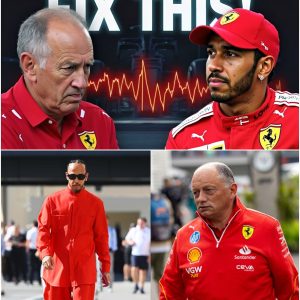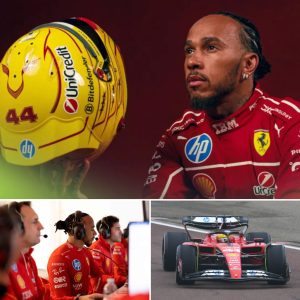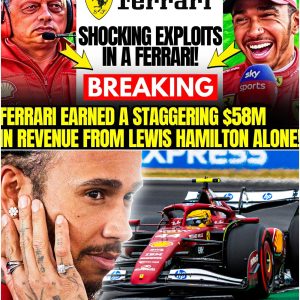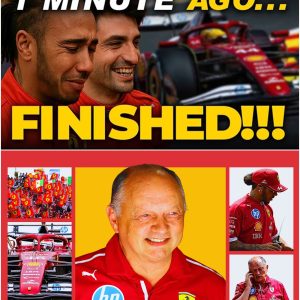The air in the Ferrari garage is thick with a tension that has become all too familiar in the 2025 Formula 1 season.
The bright crimson of the cars, usually a symbol of passion and victory, now seems to reflect the simmering frustration of a team in turmoil.
At the heart of this storm is a figure no one expected to see in such a predicament: Sir Lewis Hamilton, the seven-time world champion, whose blockbuster move to the legendary Italian team was hailed as the dawn of a new era.
Instead, it has become a cautionary tale of how even the greatest alliances can falter under the immense pressure of motorsport’s pinnacle.
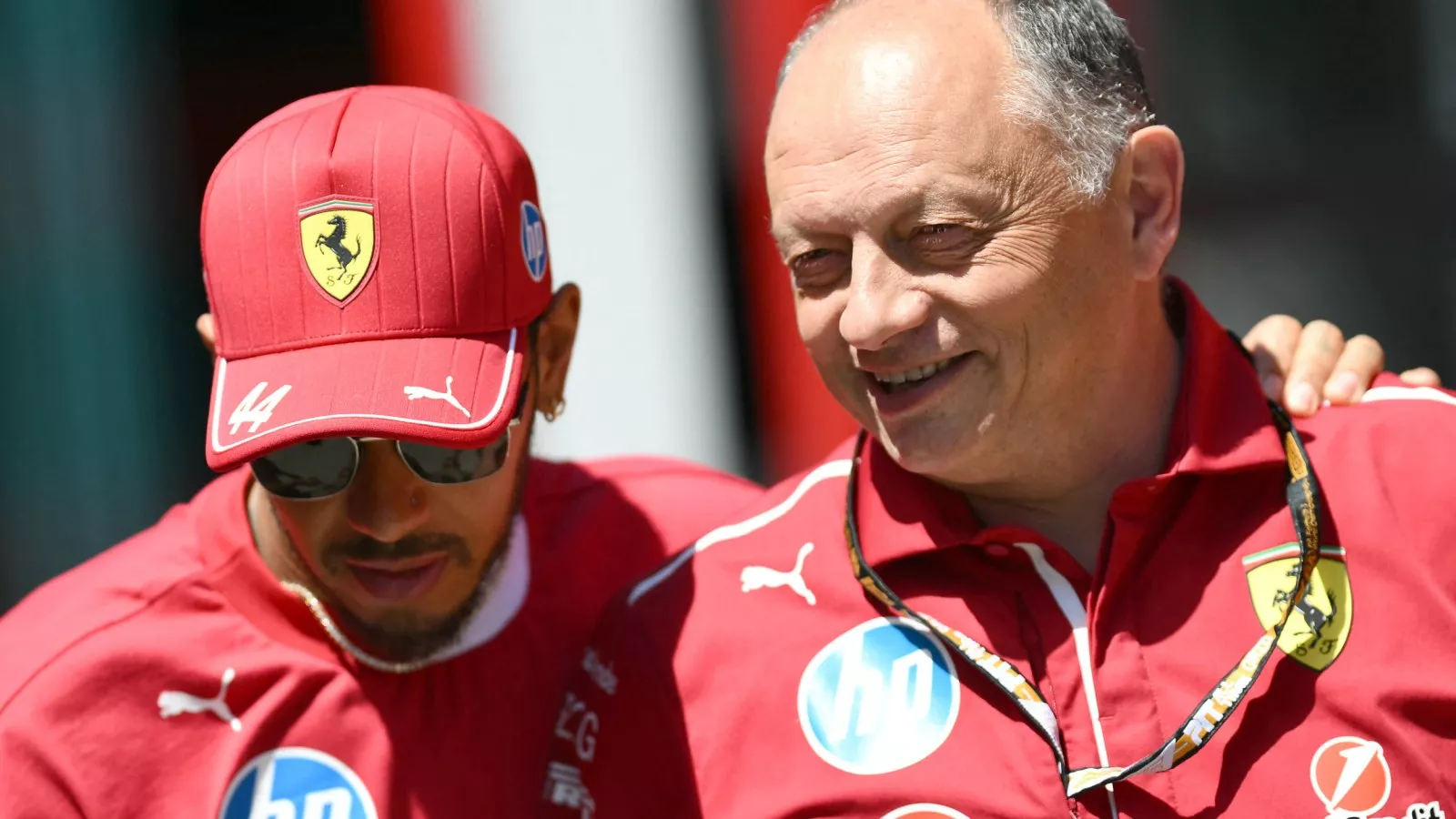
When the news broke in early 2025, the world of Formula 1 was electrified. Hamilton, the titan of the modern era, was leaving the well-oiled machine of Mercedes to don the iconic red of Ferrari. It was a move dripping with romance and history, a final, ambitious quest for an eighth world title that would unequivocally declare him the greatest of all time. The Tifosi, Ferrari’s passionate global fanbase, dared to dream. With a car that had shown immense promise, and with the prodigious talent of Charles Leclerc already in the sister car, the addition of Hamilton was seen as the final piece of the puzzle to topple the seemingly invincible Red Bull and Max Verstappen.
Yet, as the season has unfolded, the dream has curdled into a waking nightmare. Fourteen races in, and the podium has remained agonizingly out of reach for Hamilton. While Leclerc has managed to wrestle the car to pole positions, showcasing its raw, competitive pace, Hamilton has been a shadow of his former self. The confident, almost serene, figure who dominated the sport for a decade has been replaced by a man visibly battling his own frustrations. His words have become as sharp as his on-track struggles, culminating in a moment of raw honesty after a particularly disappointing qualifying session at the Hungaroring, where he bluntly labeled his own performance as “useless.”
This public display of frustration is more than just a fleeting moment of anger; it’s a window into the deep-seated issues that have plagued Hamilton since his arrival in Maranello. The problem, it appears, is not a simple case of a driver losing his edge. Instead, it’s a complex and technical incompatibility between Hamilton’s signature driving style and the fundamental characteristics of the Ferrari challenger. For years at Mercedes, Hamilton honed a unique and precise braking technique, a style that relied on a sixth sense for the car’s limits, allowing him to carry incredible speed into corners. This style, however, was developed in symbiosis with the Mercedes power unit and braking systems.

At Ferrari, he has encountered a completely different beast. The engine braking system and the new Brembo materials used by the Italian team respond in a way that is alien to Hamilton’s muscle memory. The result is a critical lack of confidence in the car’s braking, the very foundation of his driving prowess. Ferrari Team Principal, Fred Vasseur, has tried to downplay the gap, noting that Hamilton was a mere tenth of a second slower than Leclerc in that fateful qualifying session. But in a sport where thousandths of a second separate heroes from also-rans, a tenth is a chasm. That small margin is the difference between starting at the front and being swallowed by the midfield, and it’s a gap that Hamilton has been unable to bridge.
The on-track struggles are compounded by a clash of personalities within the team. Hamilton’s tendency to speak in extremes, his willingness to wear his heart on his sleeve, has created headlines that the notoriously private and politically charged environment of Ferrari is unaccustomed to. His emotional honesty, once seen as a sign of his authenticity, is now perceived as a source of internal tension. In stark contrast stands Charles Leclerc, a driver who has grown up within the Ferrari system, who understands its unique pressures, and who maintains a composed, almost stoic, public facade. This difference in approach has created a subtle but palpable friction, a sense that the two sides of the garage are operating on different emotional wavelengths.
The consequences of Hamilton’s struggles extend far beyond his personal disappointment. His inability to secure podium finishes has cost Ferrari dearly in the constructors’ championship. The team’s hopes of securing second place are now in jeopardy, with valuable points being squandered at every race weekend. Furthermore, the lack of a consistent two-pronged attack has left Leclerc to fight a lonely battle against the strategic might of Red Bull. The dream of a Hamilton-Leclerc pincer movement, a double-team strategy to outmaneuver Verstappen, has failed to materialize. Instead, Ferrari finds itself handicapped, unable to fully leverage the potential of its car and its star-studded driver lineup.
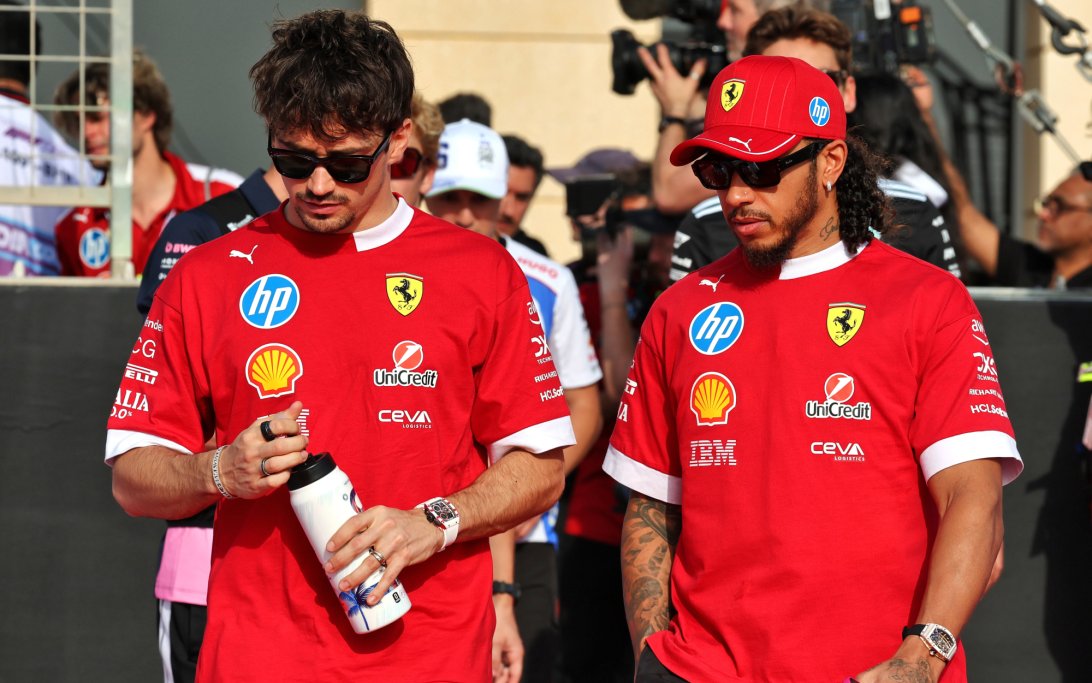
As the season marches on, the questions surrounding Hamilton’s future, and that of Ferrari, grow louder. The major technical regulation changes slated for 2026 loom large, offering a potential reset for the team. But for that to be a successful new beginning, a sense of harmony and common ground must be found now. The team must work to bridge the gap between Hamilton’s driving style and the car’s characteristics, and Hamilton, in turn, must find a way to adapt, to reinvent himself in a way he hasn’t had to for over a decade.
This is more than just a slump; it’s a crisis that strikes at the very core of Lewis Hamilton’s identity as a driver. The aura of invincibility he so painstakingly built over his career is being challenged, not by a rival, but by his own car. His legacy is on the line. Will he be remembered as the champion who conquered all, or as the legend who took one gamble too many? The final chapters of his storied career are yet to be written, but they are being penned in the unforgiving crucible of Ferrari, where only victory is acceptable, and anything less is deemed a failure. The world watches, holding its breath, to see if the Prancing Horse and its celebrated knight can find a way to ride out of this nightmare and into the dawn of a new, victorious era.
